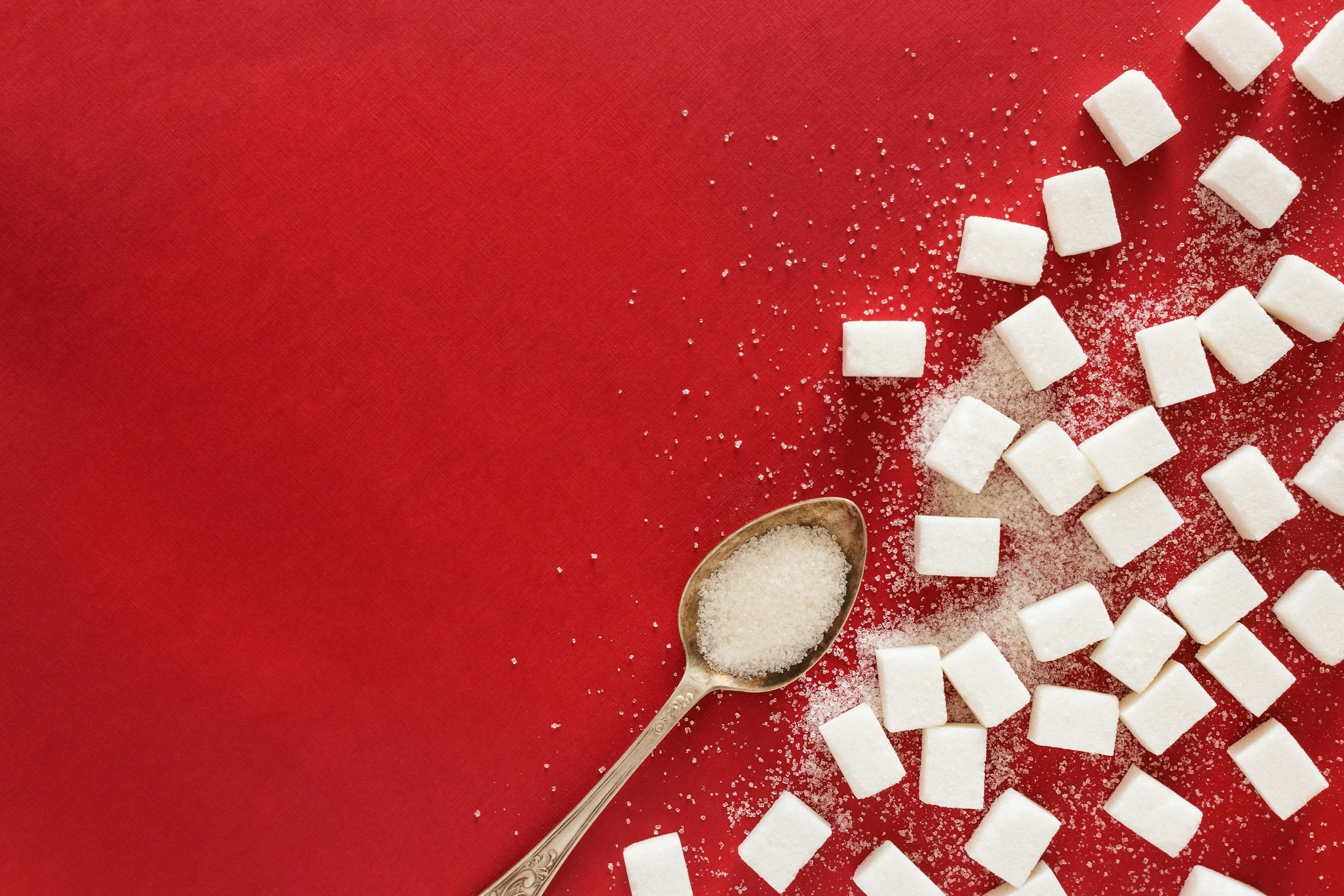Sweet Escape: Reduce Sugar and Restore Your Gut
It’s no secret that sugar is everywhere. From your favorite snacks to pantry staples like salad dressings and bread, sugar sneaks its way into countless foods. Even if you’re trying to avoid it, sugar often hides behind misleading labels with names like sucrose, fructose, dextrose, and sorbitol. For a complete list of refined sugar names, click here.
Why is sugar such a big deal? Its impact on our health goes beyond just empty calories. Research shows that sugar wreaks havoc on our metabolic, cardiovascular, and nervous systems. Excessive consumption has been linked to behavioral and emotional dysregulation, making it even harder to maintain balance in your day-to-day life. Research has shown that sugar can be as addictive as certain substances, leading to intense cravings and dependency.
But perhaps one of the most concerning effects of sugar is its impact on gut health. High sugar intake changes the gut microbiome, promoting the growth of harmful bacteria while destroying the good ones your body needs to thrive. This imbalance can lead to inflammation, poor digestion, and even difficulty focusing. A healthy gut is key to good digestion, a strong immune system, and a balanced mood.
If you’re ready to take control of your health and cut sugar, consider starting with a 30-day Sugar Detox. This structured approach can help reset your body, curb cravings, and heal your gut.
Give the program outlined below a try and see how it works for you! If you have any questions as you go through the program, feel free to reach out—I’m here to help! You can email me at info@brywell.co or schedule a discovery call directly through my website here.
Reducing sugar doesn’t mean giving up sweetness altogether. Try nutrient-dense swaps like fresh fruit, natural sweeteners like honey or maple syrup (in moderation), or low-glycemic options like stevia. Your gut—and your overall health—will thank you for it.
30-Day Sugar Detox Program
Overview: This program is designed to gradually reduce sugar intake over 30 days, making the process manageable and sustainable. Each week will focus on specific goals and habits to help clients transition to a lower-sugar lifestyle.
Week 1: Awareness and Reduction
Goals:
Identify sources of added sugars.
Begin reducing sugar intake.
Daily Tasks:
Day 1: Keep a food diary for the day. Note all foods and beverages consumed, focusing on added sugars.
Day 2: Review your diary and highlight items with added sugars. Aim to reduce sugary snacks by 50%.
Day 3: Replace sugary drinks (soda, juice, sweetened coffee) with water, herbal teas, or unsweetened beverages.
Day 4: Swap one sugary breakfast item (e.g., sugary cereals or pastries) for another option (e.g., oatmeal or eggs).
Day 5: Choose whole foods for meals (fruits, vegetables, whole grains, lean proteins) and avoid processed foods.
Day 6: Experiment with natural sweeteners (like stevia or monk fruit) in moderation.
Day 7: Reflect on the week. Journal about cravings, challenges, and successes.
Week 2: Elimination of Obvious Sugars
Goals:
Eliminate refined sugars and obvious sources.
Daily Tasks:
Day 8: Eliminate candy, chocolate, and desserts. Replace with fruit or nuts.
Day 9: Read labels carefully; eliminate any products with added sugars.
Day 10: Focus on savory snacks (veggies, nuts) instead of sweet ones.
Day 11: Plan meals for the week that are free from added sugars. Prep ingredients.
Day 12: Try new recipes that are naturally sweetened (like smoothies with fruit).
Day 13: Create a list of sugar-free snack options to have on hand.
Day 14: Reflect and adjust: What’s working? What’s still a challenge?
Week 3: Cutting Back on Hidden Sugars
Goals:
Identify and eliminate hidden sugars in foods.
Daily Tasks:
Day 15: Focus on eliminating sauces and condiments that contain sugar (ketchup, dressings).
Day 16: Switch to whole food-based snacks (e.g., homemade hummus and veggies).
Day 17: Experiment with cooking from scratch to control ingredients.
Day 18: Eliminate all added sugars from beverages (even flavored teas and coffees).
Day 19: Opt for unsweetened versions of products (almond milk, yogurt).
Day 20: Reduce portion sizes of high-sugar fruits (like bananas and grapes) and replace with lower-sugar options (like berries).
Day 21: Reflect on how you feel: more energy? Better mood? Journal your observations.
Week 4: Total Sugar-Free Living
Goals:
Completely eliminate all forms of added sugars.
Daily Tasks:
Day 22: Go through your pantry and remove all sugar-laden items. Donate or discard.
Day 23: Try a sugar-free challenge: no added sugars in any form for the next week.
Day 24: Experiment with spices (like cinnamon or vanilla) to enhance flavors without sugar.
Day 25: Focus on balanced meals with proteins, healthy fats, and complex carbs.
Day 26: Prepare sugar-free versions of your favorite meals or snacks.
Day 27: Share your journey with a friend or online community for support and accountability.
Day 28: Reflect on your journey and how your tastes may have changed. Journal about the progress you've made.
Conclusion: Maintenance and Reflection
Days 29-30:
Day 29: Reassess your goals. How do you want to maintain your sugar-free lifestyle moving forward? Set new goals.
Day 30: Celebrate your achievements! Treat yourself to a non-food reward (a spa day, a book, etc.). Share your success with others.
Resources:
